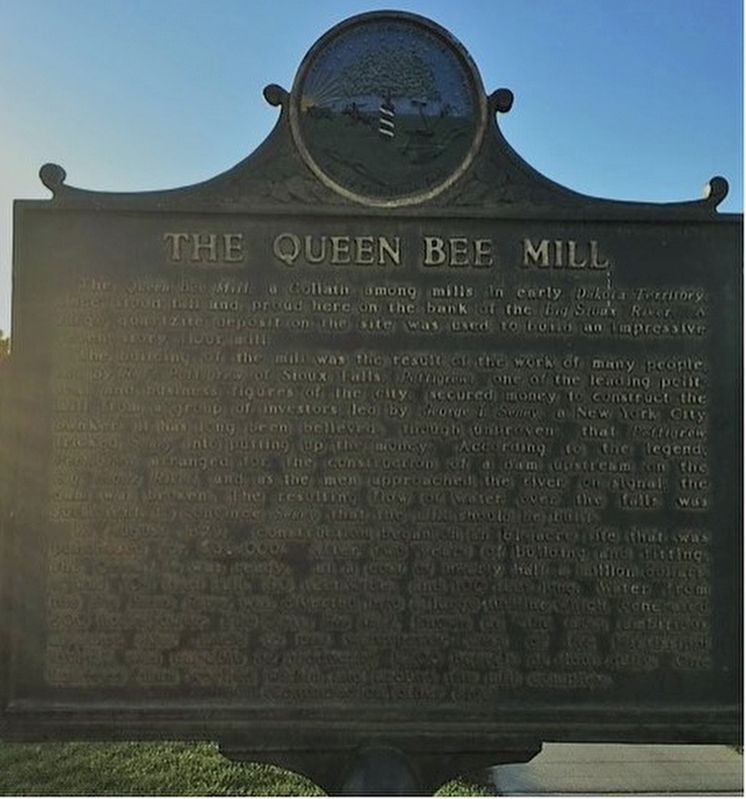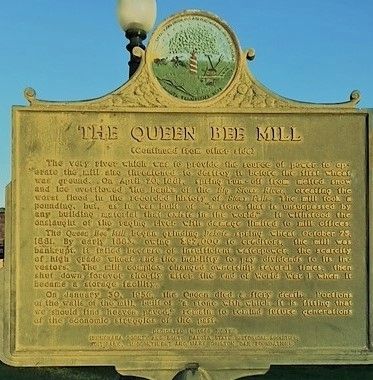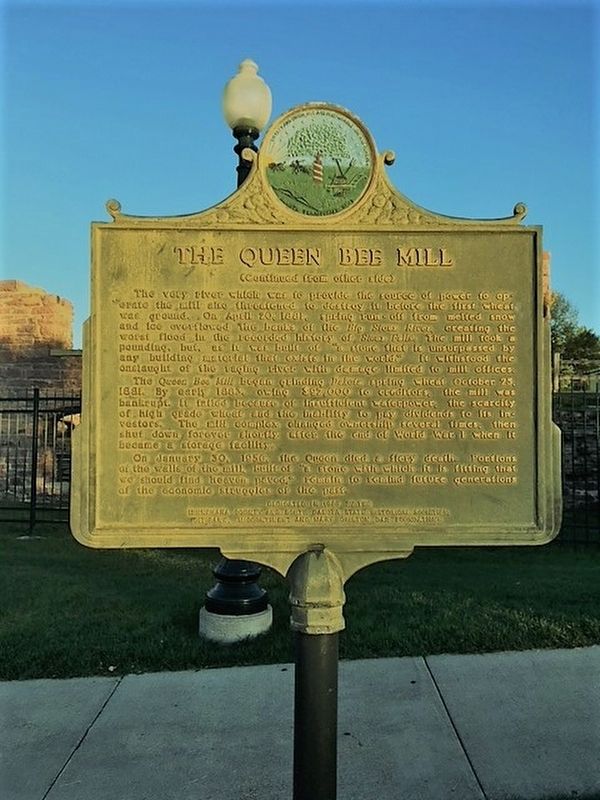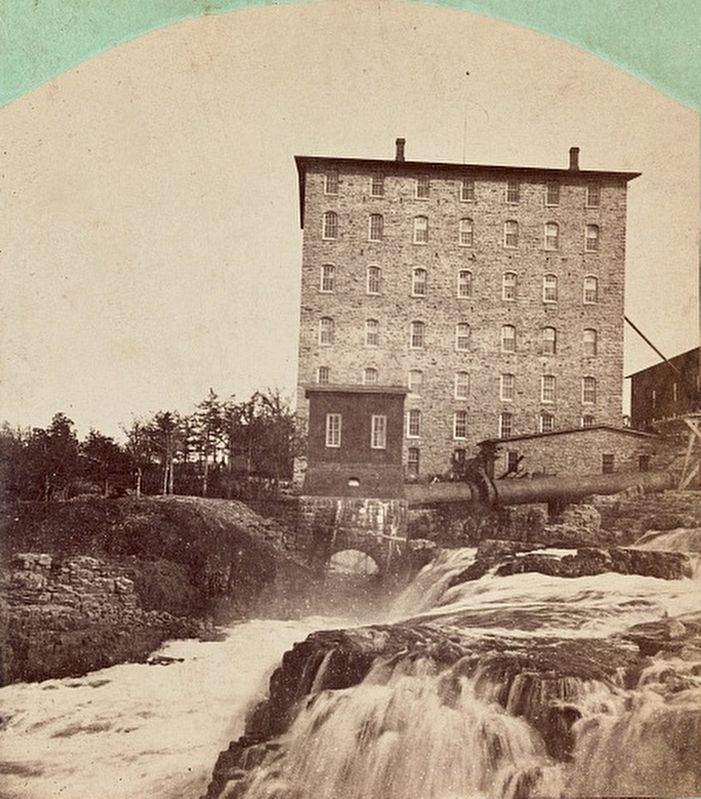Sioux Falls in Minnehaha County, South Dakota — The American Midwest (Upper Plains)
The Queen Bee Mill
The Queen Bee Mill, a goliath among mills in early Dakota Territory, once stood tall and proud here on the bank of the Big Sioux River. A large quartzite deposit on the site was used to build an impressive seven-story flour mill.
The building of the mill was the result of the work of many people, led by R. F. Pettigrew of Sioux Falls. Pettigrew, one of the leading political and business figures of the city, secured money to construct the mill from a group of investors led by George I. Seney, a New York City banker. It has long been believed, though unproven, that Pettigrew tricked Seney into putting up the money. According to that legend, Pettigrew arranged for the construction of a dam upstream on the Big Sioux River, and as the men approached the river, on signal, the dam was broken. The resulting flow of water over the falls was sufficient to convince Seney that the mill should be built.
In August 1879, construction began on an 81-acre site that was purchased for $38,000. After two years of building and fitting, the Queen Bee was ready, at a cost of nearly half a million dollars. It was 104 feet tall, 80 feet wide, and 100 feet long. Water from the Big Sioux River was diverted into a large turbine which generated 800 horsepower. The Queen Bee Mill, known as "the most ambitious attempt ever made to use waterpower west of the Mississippi River," was capable of producing 1,200 barrels of flour daily. One hundred men worked within and around the mill complex.
(Continued on other side )
(Continued from other side )
The very river which was to provide the source of power to operate the mill also threatened to destroy it before the first wheat was ground. On April 20, 1881, spying run - off from melted snow and ice overflowed the banks of the Big Sioux River, creating the worst flood in the recorded history of Sioux Falls. The mill took a pounding, but, as it was built of "a stone that is unsurpassed by any building material that existed in the world." It withstood the onslaught of the raging river with damage limited to mill offices.
The Queen Bee Bill began grinding Dakota spring wheat October 25, 1881. By early 1885, owing $97,000 to creditors, the mill was bankrupt. It failed because of insufficient waterpower, the scarcity of high grade wheat and the inability to pay dividends to its investors. The mill complex changed ownership several times, then shut down forever shortly after the end of World War I when it became a storage facility.
On January 30, 1956, the Queen died a fiery death. Portions of the walls of the mill, built of "a stone with which it is fitting that we should find heaven paved," remain to remind future generations of the economic struggles of the past.
Erected by Minnehaha County and South Dakota State Historical Societies, Citibank, Midcontinent and Mary Chilton Daughters of the American Revolution (DAR) Foundation.
Topics and series. This historical marker is listed in these topic lists: Industry & Commerce • Settlements & Settlers. In addition, it is included in the Daughters of the American Revolution series list. A significant historical date for this entry is January 30, 1956.
Location. 43° 33.36′ N, 96° 43.315′ W. Marker is in Sioux Falls, South Dakota, in Minnehaha County. The marker is located at Falls Park. Touch for map. Marker is in this post office area: Sioux Falls SD 57103, United States of America. Touch for directions.
Other nearby markers. At least 8 other markers are within walking distance of this marker. Hive of the Queen City (within shouting distance of this marker); Inland Seas (within shouting distance of this marker); Philander Prescott (within shouting distance of this marker); Harnessing the River (about 300 feet away, measured in a direct line); Namesake of the City (about 300 feet away); Beginning of Great Changes (about 300 feet away); Foundation of the City (about 300 feet away); Legacy of Ice and Rock (about 400 feet away). Touch for a list and map of all markers in Sioux Falls.
Related markers. Click here for a list of markers that are related to this marker. The Queen Bee Mill
Also see . . . Additional information on the Queen Bee Mill. (Submitted on April 27, 2023, by Carolyn Sanders of Plano, Texas.)
Credits. This page was last revised on May 24, 2023. It was originally submitted on October 2, 2018, by Ruth VanSteenwyk of Aberdeen, South Dakota. This page has been viewed 363 times since then and 44 times this year. Last updated on October 4, 2018, by Cosmos Mariner of Cape Canaveral, Florida. Photos: 1, 2, 3. submitted on October 2, 2018, by Ruth VanSteenwyk of Aberdeen, South Dakota. 4. submitted on October 3, 2018. • Andrew Ruppenstein was the editor who published this page.



